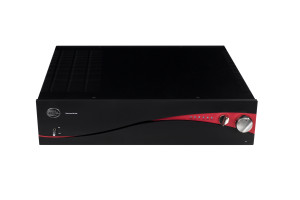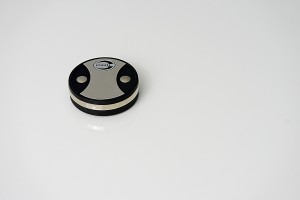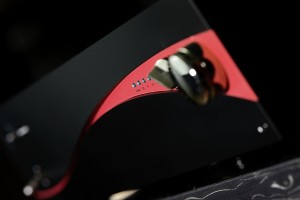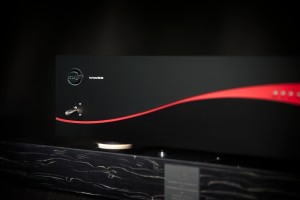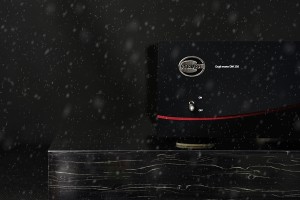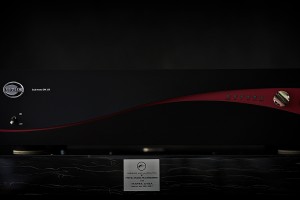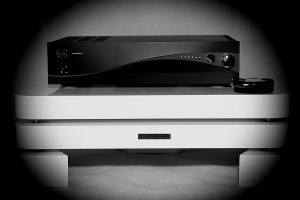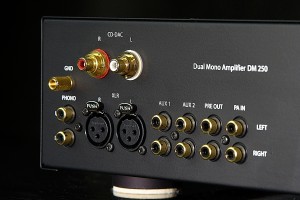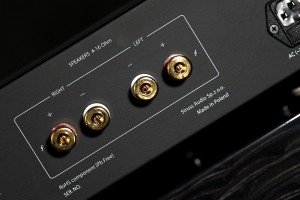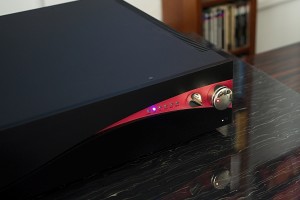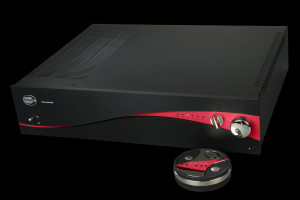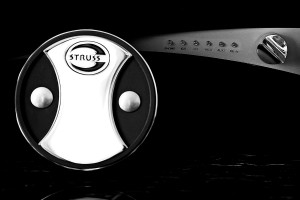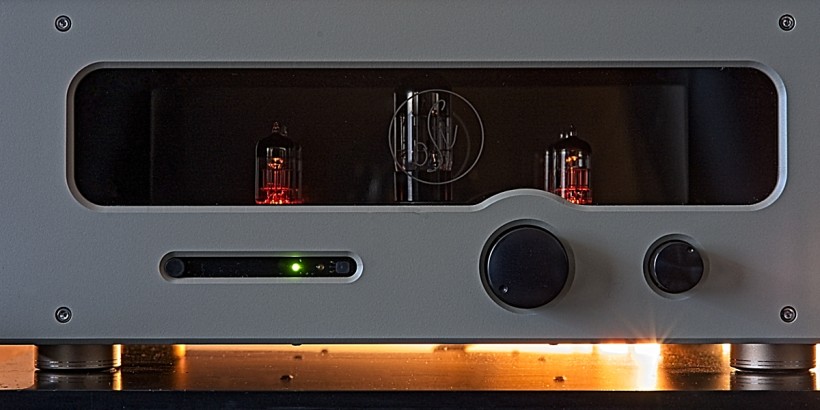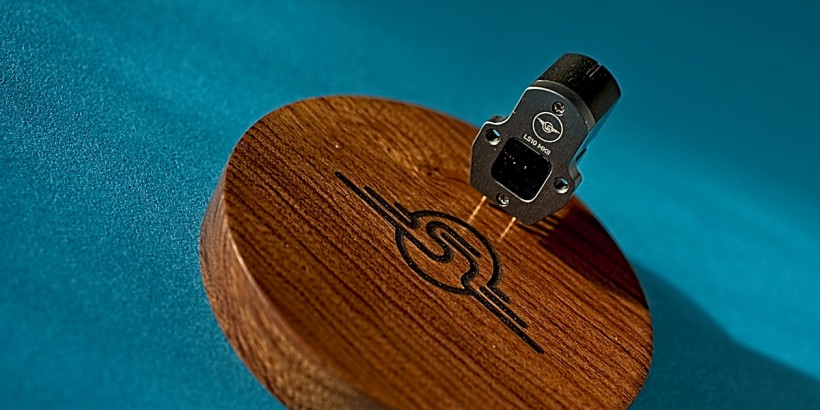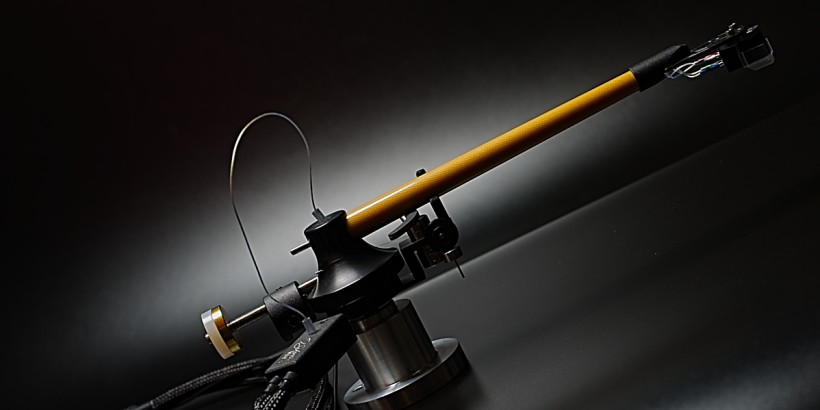The Struss brand, and its founder, Mr. Zdzisław Hryniewicz-Struss need no introduction. It’s definitely one of the most recognizable names in the Polish audio industry. His amplifiers were objects of desire for many of us as early as in the 1990s. Recently, the brand has returned with a new ownership structure, and new products designed by Mr. Zdzisław. Here comes a review of the DM-250 integrated amplifier.
Introduction
The Polish audio market has been growing dynamically since, say, mid-1990s. Judging by the number of participants of the Audio Video Shows in Warsaw, it’s become already quite big and very interesting. Large crowds attend the Warsaw show every year to learn more about hundreds or even thousands of new audio components, and a more and more of these are being developed and manufactured in our country. However, while there are quite a lot of companies in Poland manufacturing loudspeakers or audio cables, there are still not that many focusing on amplifiers, particularly solid-state ones. That is why every time I have an opportunity to listen to some promising Polish transistor amp I just have to do it. Also because of my idée fixe of a complete Polish reference/reviewer system, that I would love to be a proud owner of some day. As I have already mentioned, the Struss Audio is one of the renowned Polish brands that the vast majority of audiophiles in our country are familiar with, although some perhaps associate it with the end of the last or the beginning of the current century. In the 1990s, when the Struss Amplifiers company was founded, our audio market (I mean production) was just beginning its growth, so the amplifiers developed and offered by Mr. Zdzisław Hrynkiewicz-Struss were for many of us a sort of a revelation and an object of desire. 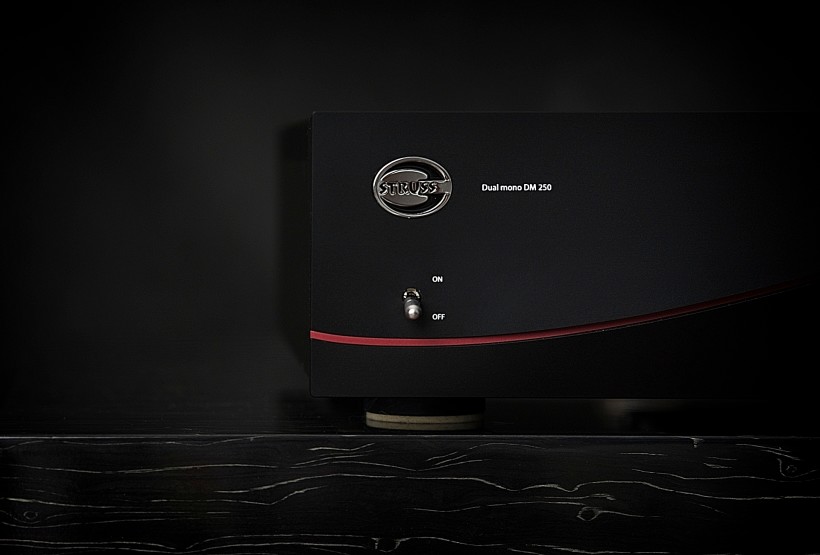 Since then, the company has undergone several transformations, but although some new products were released every now and then, so far they never visited my listening room. A few years ago, the brand’s ownership structure changed, but Mr. Zdzisław Hryniewicz-Struss remained at the position of the chief designer. Based on his extensive knowledge and experience, he developed another integrated amplifier called DM-250. At the moment, this is the only product offered by Struss Audio, but recently I received a press release about the premiere of another amplifier, the Ultimate, which took place during the show in Stuttgart in September this year. In Poland it will be presented in November during the Audio Video Show. My first contact with the “new” Struss took place last year in Munich. After the High End Show several of us, journalists, met at the airport waiting for our plane. While waiting we were talking about the Show and our impressions. At some point Mr. Wojciech Mazurkiewicz representing Struss Audio, who overheard our conversation, approach us and introduced himself. We learned from him that after the changes in the company, the famous Polish brand was about to come back one more time with new products. The first of them was the DM-250 integrated amplifier. Mr. Wojciech passionately talked about the advantages of this device and a very positive feedback they received from some serious people from the audio industry (I am not authorized to share the names, but they were impressive). Obviously, opinions of other people from the industry regarding Struss performance have their value, but since our job is to assess the performance with our own ears we wanted to do that ourselves in our own systems. So we exchanged business cards with Mr. Wojciech in case company would be interested in delivering sample units for reviews. As it ultimately turned out, quite a long time had to pass before I actually got my chance. But when I did I happily accepted the offer to find out more about DM-250’s performance myself.
Since then, the company has undergone several transformations, but although some new products were released every now and then, so far they never visited my listening room. A few years ago, the brand’s ownership structure changed, but Mr. Zdzisław Hryniewicz-Struss remained at the position of the chief designer. Based on his extensive knowledge and experience, he developed another integrated amplifier called DM-250. At the moment, this is the only product offered by Struss Audio, but recently I received a press release about the premiere of another amplifier, the Ultimate, which took place during the show in Stuttgart in September this year. In Poland it will be presented in November during the Audio Video Show. My first contact with the “new” Struss took place last year in Munich. After the High End Show several of us, journalists, met at the airport waiting for our plane. While waiting we were talking about the Show and our impressions. At some point Mr. Wojciech Mazurkiewicz representing Struss Audio, who overheard our conversation, approach us and introduced himself. We learned from him that after the changes in the company, the famous Polish brand was about to come back one more time with new products. The first of them was the DM-250 integrated amplifier. Mr. Wojciech passionately talked about the advantages of this device and a very positive feedback they received from some serious people from the audio industry (I am not authorized to share the names, but they were impressive). Obviously, opinions of other people from the industry regarding Struss performance have their value, but since our job is to assess the performance with our own ears we wanted to do that ourselves in our own systems. So we exchanged business cards with Mr. Wojciech in case company would be interested in delivering sample units for reviews. As it ultimately turned out, quite a long time had to pass before I actually got my chance. But when I did I happily accepted the offer to find out more about DM-250’s performance myself.
The device arrived in a solid, double box, well protected against dangers of being “gently” handled by a courier service. One of the first things I noticed was a detailed user manual printed in three languages. That’s something that only a handful of Polish manufacturers take care of. It clearly indicates that Struss Audio treats not only domestic, but also foreign markets seriously. As the experience of many other companies has already proven, this is definitely the right approach. In the box, apart from the user manual and the amplifier I also found quite a nice-looking remote control and power cable. The DM-250 turned out to be a medium size, dual mono integrated solid-state amplifier capable of delivering output of up to 250W per channel at 4Ω (130W at 8Ω) and hence the number in its name. The first 10W are delivered in A Class. In addition to the analogue inputs (one XLR and three RCAs, including one intended for the main source featuring separate higher quality sockets) it also features a phono preamplifier for MM cartridges. To make it an even more versatile manufacturer added also a pre-out output (it allows user to drive another power amplifier, connect a subwoofer or semi-active speakers – which I had an opportunity to do), as well as a direct input (i.e. an option of using an external preamplifier or source with an adjustable output and connecting them directly to the output stage of the DM-250). 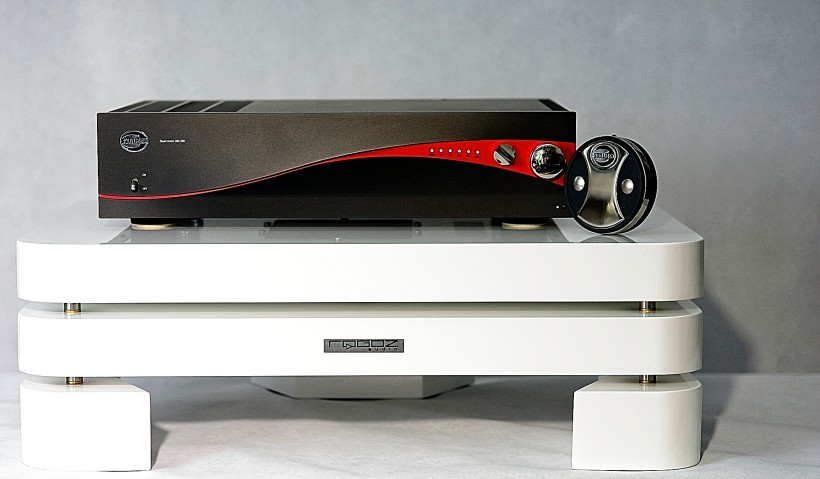 He is what the manufacturer has to say about the DM-250 on their website:
He is what the manufacturer has to say about the DM-250 on their website:
„After many years of trials and improvements, a design was developed whose spatial layout of individual electronic and mechanical elements allowed to obtain the shortest possible connections between elements, high resistance to interference with an excellent cooling system and thermal stability.
One of the unique design solutions used in DM250 is the HPCS (Harmonics and Phase Conversion System). It is constructed on the basis of a transistor (J-FET) system, in which thanks to precisely selected technical elements, it was possible to obtain the effect of generating even harmonics, whilst reversing the phase of the signal. The HPCS system is a solution that, introducing some subtle modifications in the spectrum and dynamics of the acoustic signal, adapts the sound of the DM250 amplifier to the subjective needs and characteristics of human hearing. This resembles to a certain extent, the effects obtained in tube amplifiers, but without the inconvenience of using tubes”.
And also:
„In addition, the amplifier has the ability to precisely amplify the acoustic signal throughout the whole acoustic spectrum, with a perfectly sounding and dynamic low frequency range. Also, the enhancement of medium and high frequencies, with a negligible effect on phase shifts, allows the listener to hear the exact location of apparent sound sources and the effect of reproducing sound and depth plans of the sound image. Thanks to this, it is also possible to obtain the effect of a “holographic sound field” that goes far beyond the classical effects of stereophony.
The amplifier has a phono input for the MM cartridge, and a RIAA correction preamplifier in which the Texas Instruments integrated circuit is used, based on the JFET structure.
The RIAA curve was modified, adding an additional time constant of 3.2 uS (Neumann), thus obtaining a greater spatiality of the musical image.”
Long story short, what we get is a versatile device featuring a relatively small, elegantly made chassis with an interesting front, with a bonus in the form of a very nice, round, metal remote control. High output allows users to combine the DM-250 with virtually any loudspeakers. As a result, users of this integrated may base their choice of speakers exclusively on sonic preferences, without worrying whether Struss will be able to properly drive speakers of their choice. The test promised to be an interesting experience, so lets get to it.
Sound
For the purpose of this test I paired the DM-250 with both loudspeaker pairs I use (interchangeably) every day. One of these models is a 3-way closed cabinet Ubiq Audio Model One Duelund Edition, and the other was a very interesting high-sensitivity design with aluminum cabinet, namely the GrandiNote MACH4. The last part of the test, a cherry on the top, so to speak, was performed using the impressive, costing over 50 thousand EUR Pirols by Soundspace Systems (review pending). The latter are not only much more expensive but, unlike the other two, they are a semi-active design. Namely the powerful Pirol woofers are driven by built-in amplifiers, hence in this setup Struss only controlled the bass range (via the pre-out) while driving the midrange and treble drivers. First, let me focus on the main part of the assessment carried out using my trusted Ubiq Audio and GrandiNote passive loudspeakers and then, separately I will describe the session with Pirols.
With my speakers
Using two such different (in terms of sound character, design and the whole concept) pairs of speakers for the Struss review turned out to be an extremely interesting experience. Why? Well, because with each of them the tested amplifier sounded differently, or at least the sonic result, i.e. what I heard from speakers, was different. It seemed as if the Struss strengthened the characteristic features of both, the Ubiqs and GrandiNotes, without trying to change them in any particular way. After listening to the MACH 4 (as I started with these) I noted that the DM-250 sounded fast, dynamic, delivered quite an impressive bass performance even though it did not extend very deep but was very nicely differentiated, tuneful and the resolution and saturation of the midrange and top of the band were also very good. I was also impressed with how pure and tonally neutral the presentation was without ever becoming too bright or excessively analytical.
With the Ubiqs for a change, Struss managed to shake the walls around me (that’s a slight exaggeration, but only a slight one) with a deep, powerful, punchy bass. It was a highly energetic performance, with a center of gravity placed quite low, with rich, slightly dark sound filled with information, offering a very good low-level resolution and at the same time open and unforced. In both cases it was definitely very enjoyable, musical and emotionally engaging, which does not happen so often for me (!) with solid-state amplifiers. Coincidentally, I could use the same description to define differences between these two pairs of speakers. Both are excellent, although very different in almost every respect and the DM-250 allowed each of them to present their “better sides” and to create immersive, exciting musical performances with both of them.
The conclusion from the first listening sessions was therefore, that the Struss integrated does not belong to the amplifiers that tend to impose their point of view/sonic character upon the whole system, or at least it does it to a much lesser extent than most of its competitors I know, especially those at a (relatively) reasonable price level. I think this should be one of the basic tips for potential buyers of this device. You should know that you won’t be able to use the DM-250 to shape/tune the sound of your system to your liking, or to change it in a specific intended direction. That is unless this direction has already been set by other components and the expected result of adding Struss to the mix is, while maintaining setup’s sonic signature, to invigorate it a bit, make it sound more dynamic, more saturated with energy. The DM-250 may also slightly lower the center of gravity of the sound delivered by such setup (although it will largely depend speakers), but these changes will rather be minor. The reviewed integrated can also make sure that the band’s extremes do not dominate the performance – the bass may be powerful and agile, but it should be rather focused and never dominate the rest of the band. The output headroom will easily be enough to properly manage the pace and rhythm aspect of the performance with almost any speakers. Also the treble should be a bit on the safe side, meaning one doesn’t need to worry about any brightness or aggressiveness in this area. That is unless one feeds Struss with this type of signal, or combines it with some particularly “screamy” speakers. However, it does not tend to “polish” or round the sound, it doesn’t hide any problems of the system or recordings. If there are some it will let you know because it always tries to faithfully present whatever you feed it with.
As I have already suggested, one can, or even should expect from the DM-250 that it will amplify not only the signal from the source, but also the advantages of the entire system it is a part of. Importantly, amplifying qualities of speakers did not come at the expense of any advantages of my sources, neither digital nor analog ones that I am really fond of. The reviewed Struss, compared to my Class A integrated (Shinai), sounded (especially with the Ubiqs) a bit more effortless, more energetic due to a much higher output headroom. The smoothness and nice flow of the sound, as well as more than good (for a solid-state) palpability and spatial aspect of the presentation were truly impressive. The new Struss amplifier is admittedly not the best amplifier in the world, as (for a much higher price) music can be presented in an even more refined, resolving, more precise way. It does not change the fact that I know only a handful of competitors (especially at this price level), that do not try to overlay their sonic signature to some extend on the whole system. Most have a specific sound signature, which strongly influences what ultimately comes from speakers. The Struss has a very little own sound and this is its yet another important quality. 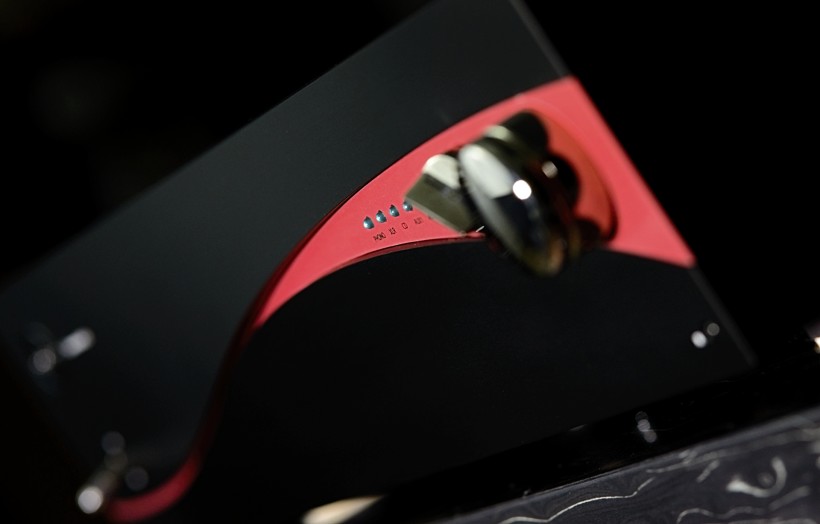 This sort of compatibility with a sonic character of the loudspeakers the DM-250 drives was obvious, for example, when I listened to the latest album by Rodrigo y Gabriela called “Mettavolution”. I’ve kept listening to this record ever since it was released, because it is simply excellent. One of the amazing tracks is the “Echos” by Pink Floyd played here with just two acoustic guitars. With Ubiq speakers the guitars had a lot of body, i.e. their soundboxes played a significant role by deepening the sound, adding a bit extra support for the strings. With MACH 4 on the other hand, the accent shifted (to a limited but noticeable extent) more to the strings. It made the same performance seem a bit more dynamic, and the attack faster. I perceived the difference between these two presentations almost as if they were two different interpretations of the same track. It was not a matter of one of them being correct and the other not or one being better than the other. They were just a bit different, but both interesting, engaging and highly enjoyable. Such perception of both “versions” resulted from a very natural sound of guitars in both cases, from the ability to properly convey the mad skills of both musicians. Both the “percussion-like” style of Gabriela and Rodrigo’s fast solos sounded incredibly well. Importantly, there was a perfect harmony of both instruments and the whole performance had a natural flow and openness to it.
This sort of compatibility with a sonic character of the loudspeakers the DM-250 drives was obvious, for example, when I listened to the latest album by Rodrigo y Gabriela called “Mettavolution”. I’ve kept listening to this record ever since it was released, because it is simply excellent. One of the amazing tracks is the “Echos” by Pink Floyd played here with just two acoustic guitars. With Ubiq speakers the guitars had a lot of body, i.e. their soundboxes played a significant role by deepening the sound, adding a bit extra support for the strings. With MACH 4 on the other hand, the accent shifted (to a limited but noticeable extent) more to the strings. It made the same performance seem a bit more dynamic, and the attack faster. I perceived the difference between these two presentations almost as if they were two different interpretations of the same track. It was not a matter of one of them being correct and the other not or one being better than the other. They were just a bit different, but both interesting, engaging and highly enjoyable. Such perception of both “versions” resulted from a very natural sound of guitars in both cases, from the ability to properly convey the mad skills of both musicians. Both the “percussion-like” style of Gabriela and Rodrigo’s fast solos sounded incredibly well. Importantly, there was a perfect harmony of both instruments and the whole performance had a natural flow and openness to it.
I got similar impressions from listening to Ray Brown Trio’s album. The double bass sounded a bit different depending on the loudspeakers, but each time the DM-250 made sure it was the music that played a key role, that it presented accurately the incredible richness of sound of this wonderful instrument, its power and weight. And I heard it with both speakers, although with the Ubiqs the body of the instrument seemed bit bigger and the strings were more pronounced and faster with GrandiNote’s boxes. In both cases, the presentation was a bit on a warm, richer side (but it was just a tiny little deviation from what one calls a neutral sound), but at the same time it was very clean, precise and, let me stress it once more as it is a very important aspect of the sound for me, open. In my experience this is a rare combination of sound qualities usually reserved for much more expensive devices. So yet another point on the “plus” side for Struss. 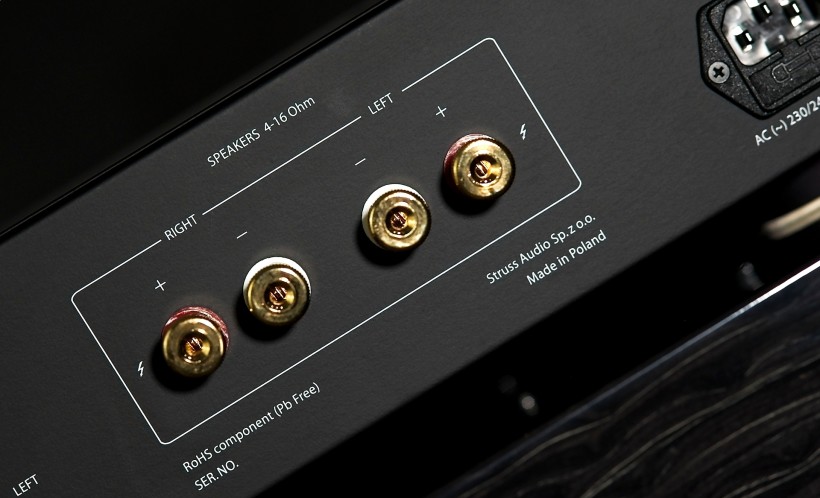 Regardless of speakers used with the reviewed amplifier, there were two aspects of the presentation that impressed me every time. First of all, the DM-250 is one of the most spatial sounding transistors that I’d ever listened to. It presented large, tangible phantom images precisely placed on a large soundstage. Its side to side size was particularly impressive, but I had no complains regarding front to back distance either. The foreground was favored in this presentation, but that’s how it works in concerts too – instruments closer to the listeners appear bigger, more tangible, more powerful and those in the back are smaller so the attention is focused on the former rather than the latter. Hence that’s a quality that makes Struss sound more realistic, not less so.
Regardless of speakers used with the reviewed amplifier, there were two aspects of the presentation that impressed me every time. First of all, the DM-250 is one of the most spatial sounding transistors that I’d ever listened to. It presented large, tangible phantom images precisely placed on a large soundstage. Its side to side size was particularly impressive, but I had no complains regarding front to back distance either. The foreground was favored in this presentation, but that’s how it works in concerts too – instruments closer to the listeners appear bigger, more tangible, more powerful and those in the back are smaller so the attention is focused on the former rather than the latter. Hence that’s a quality that makes Struss sound more realistic, not less so.
The second feature that I can rarely complement solid-state amplifiers for is the full-bodied, colorful, resolving midrange. It was this unique feature that allowed the DM-250 to play both, acoustic instruments and electric guitars, in such a convincing, highly enjoyable fashion. Even if at first glance it’s the subtly smooth, but very resonant and strong treble and the powerful, but also rather meaty, fast but slightly rounded bass, that are the dominant elements of the presentation of this integrated amplifier, it is actually the midrange quality that ultimately is the most impressive one. It allowed for guitar riffs to sound powerful and feisty, with the right amount of energy and even some sharpness when needed, but at the same time they were well differentiated and never (too) aggressive. Also, the trumpet or saxophone could slightly (as it is in their nature) pierce the ears, but at the same time the timbre, texture and breath of these instruments were rendered very well allowing them to sound very natural and convincing.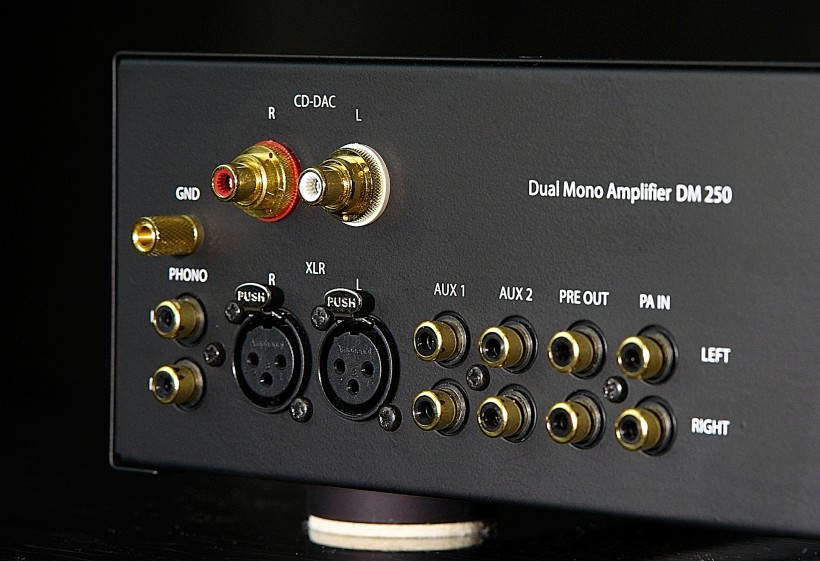 I think that the quality of vocals presented by the reviewed integrated is worth a separate paragraph. Nothing can match (in my opinion, of course) in this respect the 45 triode, although its triode cousins, the 300B or 2A3 in certain applications can approach this top level too. The reviewed Struss also can not quite match the level of top SET amplifiers in this regard, but it still does outperform most solid-state and even some tube amplifiers when it comes to vocals. It was truly surprising to hear how refined, convincing and expressive the performances of many extraordinary vocalists were with the DM-250. I caught myself many times holding my breath not to disturb my beloved Leontyne Price performing as Bizet’s Carmen. Obviously, the huge momentum and dynamics of the Vienna Philharmonics Orchestra conducted by Karajan, effortlessly and powerfully conveyed by the tested amplifier played its role too. But it was Price, Freni, Corelli and Merill, so faithfully presented in terms of timbre, texture, but also emotions, their unique interpretations of the roles they played, that made this musical experience quite unique. It was one of a kind despite the fact I’d listened to this opera many, many times on dozens of systems, including many much more expensive ones.
I think that the quality of vocals presented by the reviewed integrated is worth a separate paragraph. Nothing can match (in my opinion, of course) in this respect the 45 triode, although its triode cousins, the 300B or 2A3 in certain applications can approach this top level too. The reviewed Struss also can not quite match the level of top SET amplifiers in this regard, but it still does outperform most solid-state and even some tube amplifiers when it comes to vocals. It was truly surprising to hear how refined, convincing and expressive the performances of many extraordinary vocalists were with the DM-250. I caught myself many times holding my breath not to disturb my beloved Leontyne Price performing as Bizet’s Carmen. Obviously, the huge momentum and dynamics of the Vienna Philharmonics Orchestra conducted by Karajan, effortlessly and powerfully conveyed by the tested amplifier played its role too. But it was Price, Freni, Corelli and Merill, so faithfully presented in terms of timbre, texture, but also emotions, their unique interpretations of the roles they played, that made this musical experience quite unique. It was one of a kind despite the fact I’d listened to this opera many, many times on dozens of systems, including many much more expensive ones.
The whole evening spent with many recordings with vocals in the lead roles, from the opera singers mentioned above to Rysiek Riedel, Martina Jakubowicz, Steve Ray Vaughan, Cassandra Wilson, Etta James and Steven Tyler, to mention a few, confirmed how well the DM-250 copes not only with faithful reproduction of timbres and textures of these voices, but also with the expressive, emotional side of such recordings. The music genre didn’t really matter, as long as the recording was at least of a decent quality. It was only with those poor ones that I realized that the tolerance of the Polish amplifier is limited. Whenever possible, it brought out everything good from a given recording in a way that attracted my attention. It did not hide the weaknesses, but these were pushed a bit to the background. It was only when I fed it with some really low-class tracks that it gave up and proved that it followed the simple role: sh.t in, sh.t out. Well – I’ve always appreciated honesty and truthfulness, so I can only applaud this approach, even if it means eliminating some part of a music library from rotation. 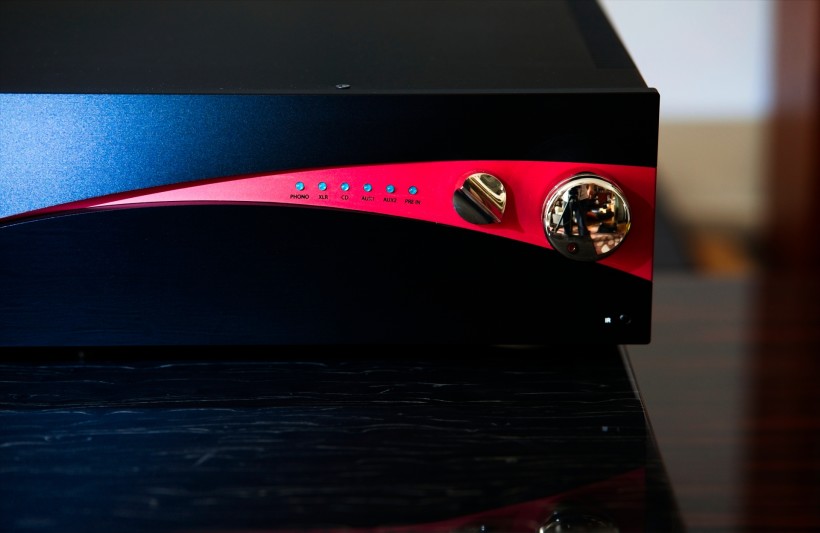 With Pirols
With Pirols
The DM-250 sort of saved the day when Michael Plessmann brought his loudspeakers to my place. At this time I had only my own two integrated amplifiers (none of them featuring a pre-out) and a separate preamplifier, but no power amplifier at my disposal. The Pirols are semi-active design with in-build amplifiers driving their powerful woofers, but it requires delivering signal for them to RCA or XLR input. Struss, featuring the pre-out, allowed me to connect these speakers as soon as they arrived. As these beast weigh over 100kg each getting them here was not easy so if Michael couldn’t have even checked if they survived the trip from Berlin he would have been rather disappointed. But thanks to the DM-250 Michael, Mr. Jacek working for him and me had a chance to spend several hours listening to Pirols together. It also gave the designer a chance to refine the positioning of the speakers in my room, as well as to tweak the DSP settings to optimize sound to both acoustic conditions and my sound preferences. 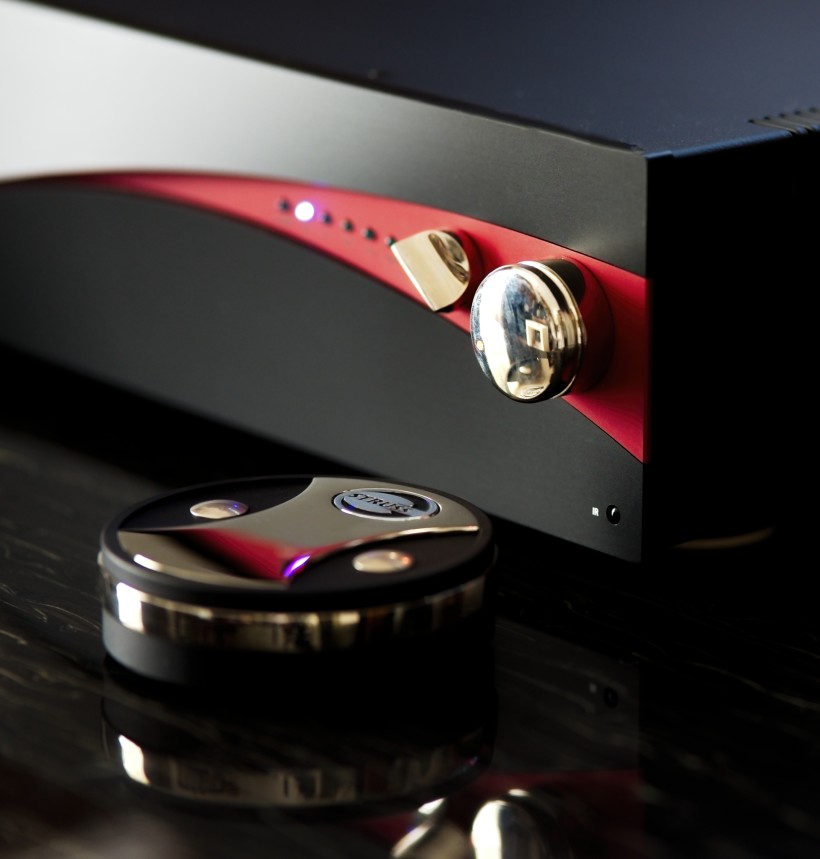 Using the reviewed amplifier in combination with these semi-active speakers created a unique opportunity for me to assess its midrange and treble performance in a way that wasn’t possible with “regular” speakers. So how did it fare in this setup? If you compared prices of this amp and said speakers such marriage would seem way off. Yet, after refining all the settings, we all agreed that the system sounded really good. Even the very demanding Michael, who wanted his “children” to present themselves at their best, stated that he was pleased with what he heard. It sounded clean, resolving and dynamic. The sound combined high transparency with the richness and saturation (maybe not quite of a high end tube amplifier, but still really good), and the music was presented in a smooth, natural and unforced way.
Using the reviewed amplifier in combination with these semi-active speakers created a unique opportunity for me to assess its midrange and treble performance in a way that wasn’t possible with “regular” speakers. So how did it fare in this setup? If you compared prices of this amp and said speakers such marriage would seem way off. Yet, after refining all the settings, we all agreed that the system sounded really good. Even the very demanding Michael, who wanted his “children” to present themselves at their best, stated that he was pleased with what he heard. It sounded clean, resolving and dynamic. The sound combined high transparency with the richness and saturation (maybe not quite of a high end tube amplifier, but still really good), and the music was presented in a smooth, natural and unforced way.
As I’ve mentioned, we listened together for several hours until it got quite late and during that time we had an opportunity to listen to many recordings representing various music genres. Then, as it was getting late, we had to gradually reduce the volume level. That’s a tricky job or a challenge for many amplifiers – they sound great when playing loud, but when it comes to low volume levels a lot of their advantages seem to disappear. As it turned out in this case the position of the potentiometer on the scale did not matter much. Quiet, calm listening turned out to be as satisfying as the “normal” levels or even those few times when we played really loud (which both, the speakers and amplifier seemed to enjoy). The DM-250 proved itself particularly well in all tracks based on pace&rhythm, which (in cooperation with the Pirol built-in amplifiers obviously) was exemplary. It delivered an agile, energetic, engaging performance, one that is capable of raising listeners’ blood pressure (in a good way I mean). 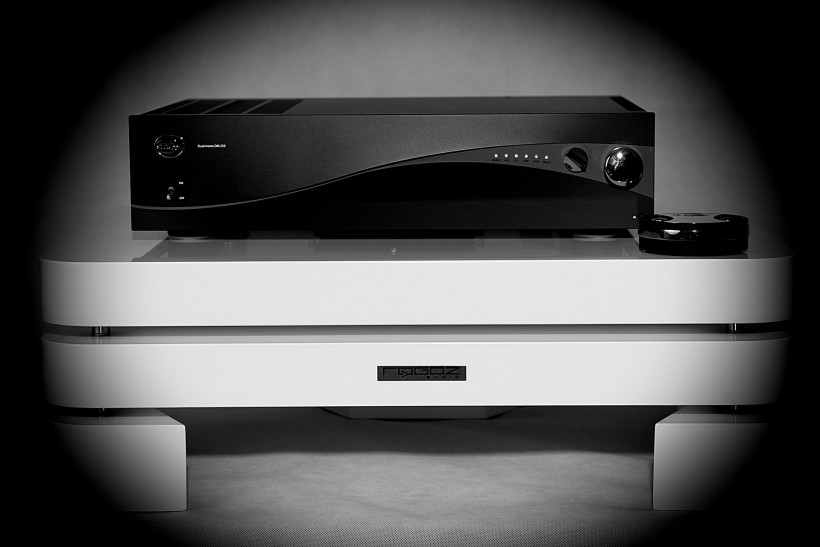 Due to the performance of an excellent AMT ribbon tweeter, we could fully appreciate the high resolution and purity of this range delivered by the Polish amplifier. The combination of refinement, richness, sort of a subtle glow and lack of any aggressiveness and roughness resulted in a beautiful performance regardless of music genre. The DM-250’s ability to differentiate recording’s quality was even more obvious with these speakers As a result, the duo (actually the trio) Struss + Pirols was not particularly forgiving. There was no smoothing out any roughness, no rounding of tough edges. When it came to few tracks with sharp or grained treble that was exactly how the system delivered it. Also whenever the midrange was a bit muddy, not clear enough, or the bass was overblown in the recording, we could hear it very accurately. This high accuracy came handy when, for example, the upper registers of the bit sharp-sounding trumpet had to be conveyed. The sound was a bit piercing, but not even a bit more than it had to be to accurately portray the natural, vibrant sound of this instrument. Long story short, listening session with Pirols confirmed again that the tested amplifier did not tend to add anything from itself, but rather did its best to convey whatever we had thrown at it. That meant that high quality recordings sounded remarkably well, while the poor ones… well, we never actually got till the end of any of them.
Due to the performance of an excellent AMT ribbon tweeter, we could fully appreciate the high resolution and purity of this range delivered by the Polish amplifier. The combination of refinement, richness, sort of a subtle glow and lack of any aggressiveness and roughness resulted in a beautiful performance regardless of music genre. The DM-250’s ability to differentiate recording’s quality was even more obvious with these speakers As a result, the duo (actually the trio) Struss + Pirols was not particularly forgiving. There was no smoothing out any roughness, no rounding of tough edges. When it came to few tracks with sharp or grained treble that was exactly how the system delivered it. Also whenever the midrange was a bit muddy, not clear enough, or the bass was overblown in the recording, we could hear it very accurately. This high accuracy came handy when, for example, the upper registers of the bit sharp-sounding trumpet had to be conveyed. The sound was a bit piercing, but not even a bit more than it had to be to accurately portray the natural, vibrant sound of this instrument. Long story short, listening session with Pirols confirmed again that the tested amplifier did not tend to add anything from itself, but rather did its best to convey whatever we had thrown at it. That meant that high quality recordings sounded remarkably well, while the poor ones… well, we never actually got till the end of any of them.
We didn’t really find any reason to doubt the quality of the DM-250’s midrange either. It was smooth, rich and well-differentiated, colorful (but not colored!), rich with textures and information, and also the low-level resolution was really good. I also appreciated the coherence of the whole band that is so important for any music. The comparison with the 300B SET showed that in terms of richness, palpability and openness of medium and high tones, the DM-250 did not quite rich the same level, but let’s not forget that we are talking about a reasonably priced integrated and not a top-high-end one. I definitely liked the energy and dynamics of this presentation and the high fidelity achieved without the sound getting to analytical, too sterile, if you know what I mean. All these qualities were combined together into a coherent, well-thought-through way so that the elements that are actually the most important ones – music itself and all the emotions that come from it – were always in the very center of every performance. And that’s exactly what I expect or even demand from every audio component or system because if there is no music, no emotions in the sound, what’s the point of even listening to it? 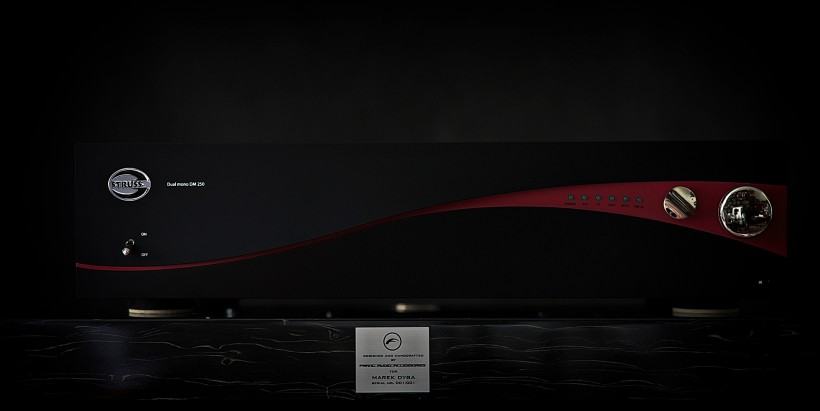
Summary
I can rarely say that I really enjoyed time spent with a purely solid-state amplifier, but the Struss Audio DM-250 turned out to be one of such cases. You should also know that almost all other quartz-based amplifiers that I’d liked earlier cost several, and some even dozens times more. The Polish amplifier combines naturalness with neutrality, explosive dynamics and high energy with smoothness and elegance, high resolution and purity with coherence, richness and musicality. Plus it doesn’t really care about music genres – it can play them all. It is highly enjoyable and it makes you want to keep listening to more and more music, and that comes from a confirmed tubes aficionado who loves them for their extraordinarily organic presentation. As if the classy performance wasn’t enough, many will also appreciate the relatively small size, and interesting design of the front panel (and remote control’s) and the practical side, i.e. high output, pre-out, power-in and a phono input for MM cartridges. All these elements combined make the DM-250 one of the most interesting items within its price range and even beyond it as it could boldly compete with many more expensive amplifiers. Impressive performance, great looks and it’s made in Poland!
Technical specification (according to manufacturer):
- Output:8 Ω / 2 x 130 W (CLASS AB); 4 Ω / 2 x 250 W (CLASS AB)
- Minimum impedance load: 1 Ω (instantaneous)
- Class A operation up to: 2 x 10 W
- Power consumption: STATIC 40 VA – 800 VA (PEAK)
- Output impedance: 0.10 Ω
- Distortion – THD: 0.1% at 1 W / 8 Ω; 0.025% at 130 W / 8 Ω
- Frequency response: 5 Hz – 250 kHz – 3 dB / 1 W / 8 Ω, 10 – 30,000 Hz: ± 0.1 dB
- Slew rate: 200 V/μs
- Dynamics: 140 dB
- Signal – noise ratio: 145 dB (IHF – A)
- Inputs: 2 x universal – RCA; XLR Amphenol; separated CD / DAC – RCA; phono MM – RCA, power-in – RCA
- Preamplifier: output – RCA
- Sensitivity of inputs: 500 mV – universal inputs and dedicated CD / DAC; 250 mV – XLR input; 3 mV – MM input; 0.775 V – power amplifiers
- Input impedance: 100 kΩ; universal inputs and CD / DAC; 22 kΩ XLR; 47 kΩ MM; 47 kΩ power amplifiers
- Potentiometer (volume): the highest precision model from the Alps – Blue Velvet
- Transformers: 2 x toroidal, magnetically isolated 500 VA each
- Capacitors filtering the supply voltage: 4 x 15 000 uF – Nippon Chemi-Con
- Advanced protection system: against short-circuiting of the loudspeakers and a stream of DC voltage at the output
- Remote control:RC5 code (volume)
- The DM 250 amplifier fulfills all requirements and standards valid in the EU
- Net weight: 16 kg
- Dimensions: 430 x 102 x 338 mm
- Manufacturer’s warranty: 24 months
Price (when under review):
- Struss Audio DM-250: 4.370 EUR
- Manufacturer: Struss Audio
Associated equipment:
- Analogue front end: J.Sikora Standard MAX turntable, J.Sikora KV12 tonearm , AirTight PC-3, phonostages: Grandinote Celio mk IV, ESE Lab Nibiru V 2.5
- Digital source: a passive, custom PC with WIN10, Roon, Fidelizer Pro 7.3, JCat USB Femto card with iFi power supply, Hdplex linear power supply for PC, JCAT USB Isolator
- D/A Converter: LampizatOr Golden Atlantic +Ideon Audio 3R Master Time (USB signal regenerator)
- Power amplifier: GrandiNote Shinai
- Preamplifier: Audia Flight FLS1
- Loudspeakers: Ubiq Audio Model ONE Duelund Edition. GrandiNote MACH4, SoundSpace Systems Pirol
- Interconnects: Hijiri Million, Less Loss Anchorwave, KBL Sound Zodiac XLR, TelluriumQ Silver Diamond USB
- Speaker cables: LessLoss Anchorwave
- Power cables:LessLoss DFPC Signature, Gigawatt LC-3
- Power:Gigawatt PF-2 MK2 and Gigawatt PC-3 SE Evo+; a custom power line with Gigawatt LC-Y in-wall cable; Gigawatt G-044 Schuko and Furutech FT-SWS-D (R)
- Racks: Base VI, Rogoz Audio 3RP3/BBS
- Anti-vibration accessories: ROGOZ-AUDIO SMO40 and CPPB16 platforms and ROGOZ AUDIO BW40MKII feet, Franc Accessories Ceramic Disc Slim Feet and Wood Block Platform



